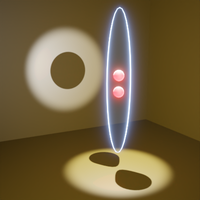Publication Date: April 25, 2023
Authors: Kenneth G. Jackson, Colin J. Dale, Jeff Maki, Kevin G. S. Xie, Ben A. Olsen, Denise J. M. Ahmed-Braun, Shizhong Zhang, and Joseph H. Thywissen (CQIQC Member).
Abstract:
Orbital degrees of freedom play an essential role in metals, semiconductors, and strongly confined electronic systems. Experiments with ultracold atoms have used highly anisotropic confinement to explore low-dimensional physics, but they typically eliminate orbital degrees of freedom by preparing atoms in the motional ground states of the strongly confined directions. Here, we prepare multiband systems of spin-polarized fermionic potassium (40K) in the quasi-one-dimensional (q1D) regime and quantify the strength of atom-atom correlations using radio-frequency spectroscopy. The activation of orbital degrees of freedom leads to a new phenomenon: a low-energy scattering channel that has even particle-exchange parity along the q1D axis, as if the underlying interactions were s-wave. This emergent exchange symmetry is enabled by orbital singlet wave functions in the strongly confined directions, which also confer high-momentum components to low-energy q1D collisions. We measure both the q1D odd-wave and even-wave “contact” parameters for the first time and compare them to theoretical predictions of one-dimensional many-body models. The strength and spatial symmetry of interactions are tuned by a p-wave Feshbach resonance and by transverse confinement strength. Near resonance, the even-wave contact approaches its theoretical unitary value, whereas the maximum observed odd-wave contact remains several orders of magnitude below its unitary limit. Low-energy scattering channels of multi-orbital systems, such as those found here, may provide new routes for the exploration of universal many-body phenomena.
Related links

